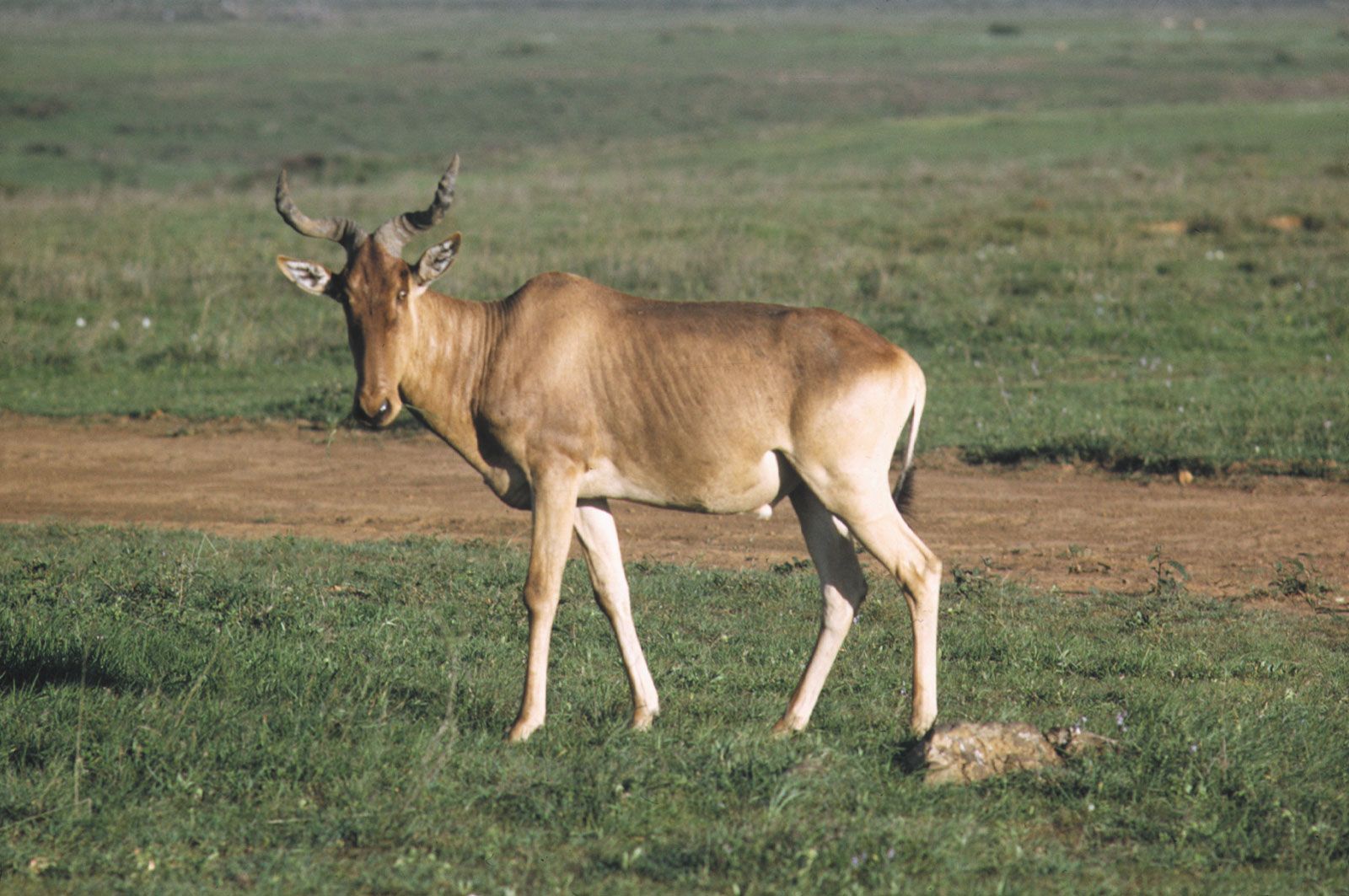
What makes the Hartebeest such a unique animal? The Hartebeest, a type of African antelope, stands out due to its distinctive appearance and fascinating behaviors. With its elongated face, oddly shaped horns, and robust body, it’s hard to mistake this creature for any other. Hartebeests are known for their incredible speed and agility, which help them evade predators in the wild. They also have a unique social structure, often forming small herds led by a dominant male. These animals are not just fast runners but also efficient grazers, capable of thriving in harsh environments where other species might struggle. Their adaptability and resilience make them a remarkable subject of study for wildlife enthusiasts and researchers alike.
What is a Hartebeest?
Hartebeests are fascinating creatures that roam the African savannas. Known for their unique appearance and impressive speed, these antelopes have many interesting traits. Let’s dive into some captivating facts about hartebeests.
- Hartebeests belong to the Bovidae family, which includes other antelopes, cattle, goats, and sheep.
- There are eight subspecies of hartebeests, each with distinct characteristics and habitats.
- The name "hartebeest" comes from the Dutch word "hertebeest," meaning "deer beast."
- Hartebeests have a distinctive elongated head and sloping back, giving them a unique silhouette.
- Both male and female hartebeests have horns, which can grow up to 70 centimeters long.
- These antelopes are known for their incredible speed, capable of running up to 70 kilometers per hour.
- Hartebeests primarily feed on grasses, making them grazers.
- They have a specialized digestive system that allows them to extract maximum nutrients from tough grasses.
- Hartebeests can survive in arid environments due to their ability to go without water for long periods.
- These antelopes are social animals, often forming herds of up to 300 individuals.
Hartebeest Behavior and Adaptations
Hartebeests have developed several behaviors and adaptations that help them thrive in their environment. Here are some intriguing facts about their behavior and survival strategies.
- Hartebeests are diurnal, meaning they are most active during the day.
- They use their keen sense of smell and hearing to detect predators.
- When threatened, hartebeests will form a defensive circle with their horns facing outward.
- They communicate with each other using a series of grunts, snorts, and bellows.
- Hartebeests have a unique way of marking their territory by rubbing their preorbital glands on vegetation.
- During the mating season, males will engage in fierce battles to establish dominance and win over females.
- Calves are born after a gestation period of about eight months and can stand within minutes of birth.
- Young hartebeests remain hidden in tall grass for the first few weeks of life to avoid predators.
- Hartebeests have a lifespan of around 12 to 15 years in the wild.
- They are known to migrate in search of better grazing areas during the dry season.
Hartebeest Conservation Status
Despite their resilience, hartebeests face several threats that impact their populations. Here are some facts about their conservation status and efforts to protect them.
- The International Union for Conservation of Nature (IUCN) lists some subspecies of hartebeests as vulnerable or endangered.
- Habitat loss due to agricultural expansion and human settlement is a significant threat to hartebeests.
- Poaching for meat and horns also poses a danger to their populations.
- Conservation programs focus on habitat restoration and anti-poaching measures to protect hartebeests.
- Some protected areas and national parks in Africa serve as safe havens for hartebeests.
- Community-based conservation initiatives involve local communities in protecting hartebeests and their habitats.
- Research and monitoring programs help track hartebeest populations and assess their health.
- Ecotourism provides financial support for hartebeest conservation efforts.
- Translocation projects have been implemented to reintroduce hartebeests to areas where they have been extirpated.
- Education and awareness campaigns aim to inform the public about the importance of hartebeest conservation.
Interesting Tidbits About Hartebeests
Beyond their basic biology and conservation, hartebeests have some quirky and lesser-known facts that add to their charm.
- Hartebeests are sometimes called "kongoni" in Swahili.
- They have a unique gait, often described as a "rocking horse" motion.
- Hartebeests can jump up to 2 meters high when startled.
- They are known to form mixed-species herds with other antelopes like zebras and wildebeests.
- Hartebeests have been depicted in ancient rock art, indicating their long-standing significance to humans.
- Despite their awkward appearance, hartebeests are incredibly agile and can make sharp turns while running.
Hartebeest: Nature's Resilient Grazers
Hartebeest are fascinating creatures. Their unique adaptations, like elongated heads and high shoulders, make them stand out in the animal kingdom. These antelopes are not just survivors but also key players in their ecosystems. They help maintain grasslands by grazing, which benefits other wildlife. Despite facing threats from habitat loss and hunting, hartebeest populations show resilience. Conservation efforts are crucial to ensure their survival. Learning about these animals reminds us of the intricate balance in nature. Next time you see a hartebeest, you'll know it's more than just another antelope. It's a symbol of adaptability and ecological importance. So, whether you're a wildlife enthusiast or just curious, appreciating the hartebeest adds a layer of understanding to our natural world. Keep exploring, and you'll find there's always more to learn about these incredible animals.
Was this page helpful?
Our commitment to delivering trustworthy and engaging content is at the heart of what we do. Each fact on our site is contributed by real users like you, bringing a wealth of diverse insights and information. To ensure the highest standards of accuracy and reliability, our dedicated editors meticulously review each submission. This process guarantees that the facts we share are not only fascinating but also credible. Trust in our commitment to quality and authenticity as you explore and learn with us.
